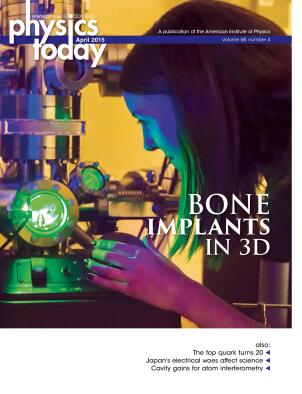Notes on the history of the Coriolis effect
DOI: 10.1063/PT.3.2734
A colleague recently shared with me some back issues of Physics Today. In one of them (August 2011, page 8
In shooting the cannon, it and the target are moving with equal speed, both being carried by the motion of the terrestrial globe. Although the cannon will sometimes be placed closer to the pole than the target and its motion will consequently be somewhat the slower, being made along a smaller circle, this difference is insensible because of the small distance from the cannon to the mark. 1
Thus, whereas Galileo argued that the deflection produced by a rotating Earth was too small to be observed, Riccioli and Grimaldi argued that the lack of observation was proof of a steady Earth.
Continuing the discussion, Manuel López-Mariscal (Physics Today, November 2012, page 8
References
1. G. Galilei, Dialogue Concerning the Two Chief World Systems, S. Drake, trans., U. California Press (1953), p. 179.
2. L. Euler, Mem. Acad. Sci. Berlin 6, 311 (1752);
A. Clairaut, Mem. Math. Phys. Acad. R. Sci. (1742), p. 1.3. R. Dugas, A History of Mechanics, J. R. Maddox, trans., Éditions du Griffon (1955).
4. J.-B. Bélanger, Cours de mécanique ou résumé de leçons sur la dynamique, la statique, et leurs applications à l’art de l’ingénieur, Carilian-Goeury et V. Dalmont (1847).
5. A. Einstein, Jahrb. Radioakt. Elektron. 4, 411 (1907).
More about the Authors
Oscar Velasco Fuentes. (ovelasco@cicese.mx) Center for Scientific Research and, Higher Education of Ensenada, (CICESE), Ensenada, Mexico.
